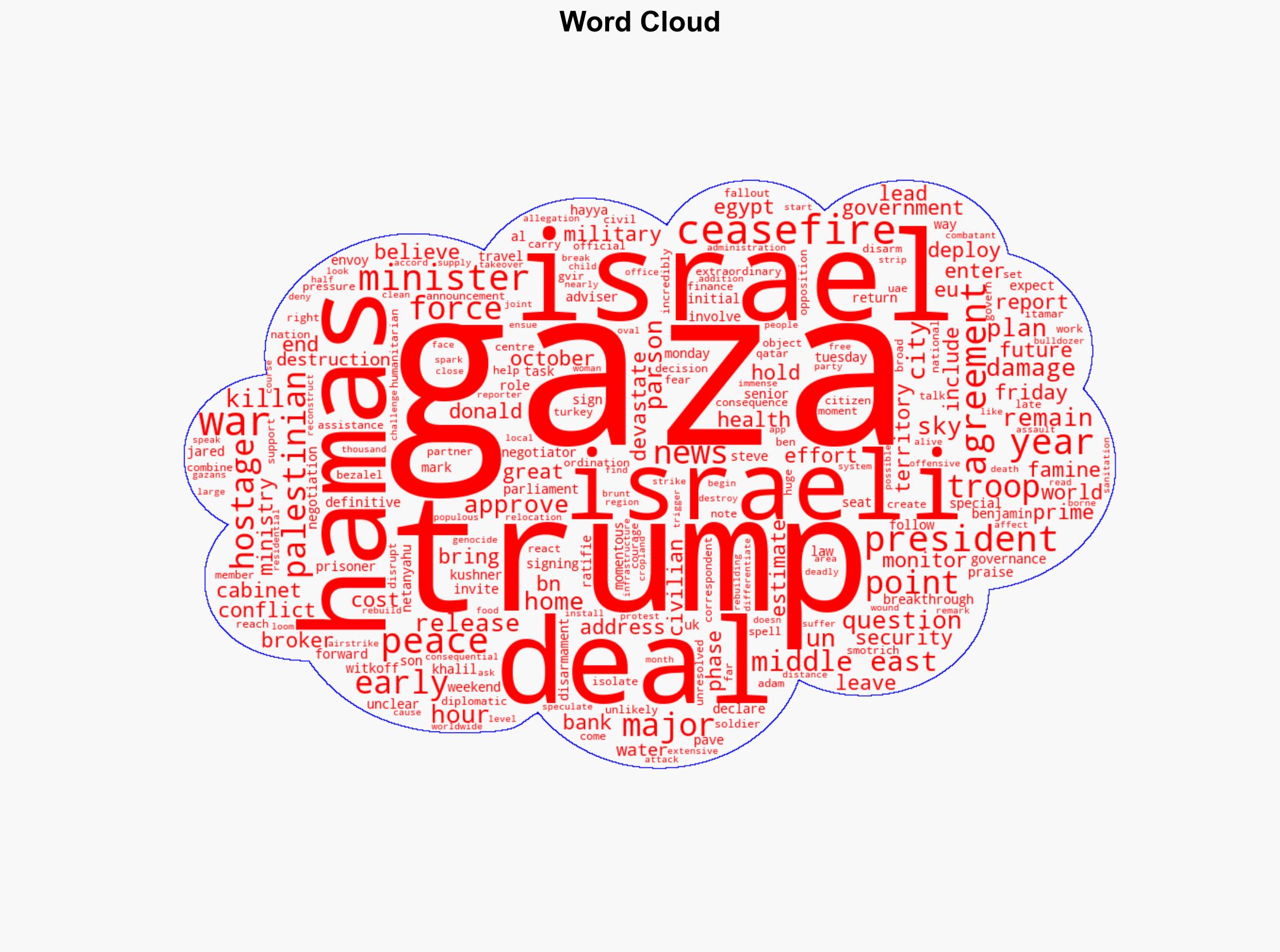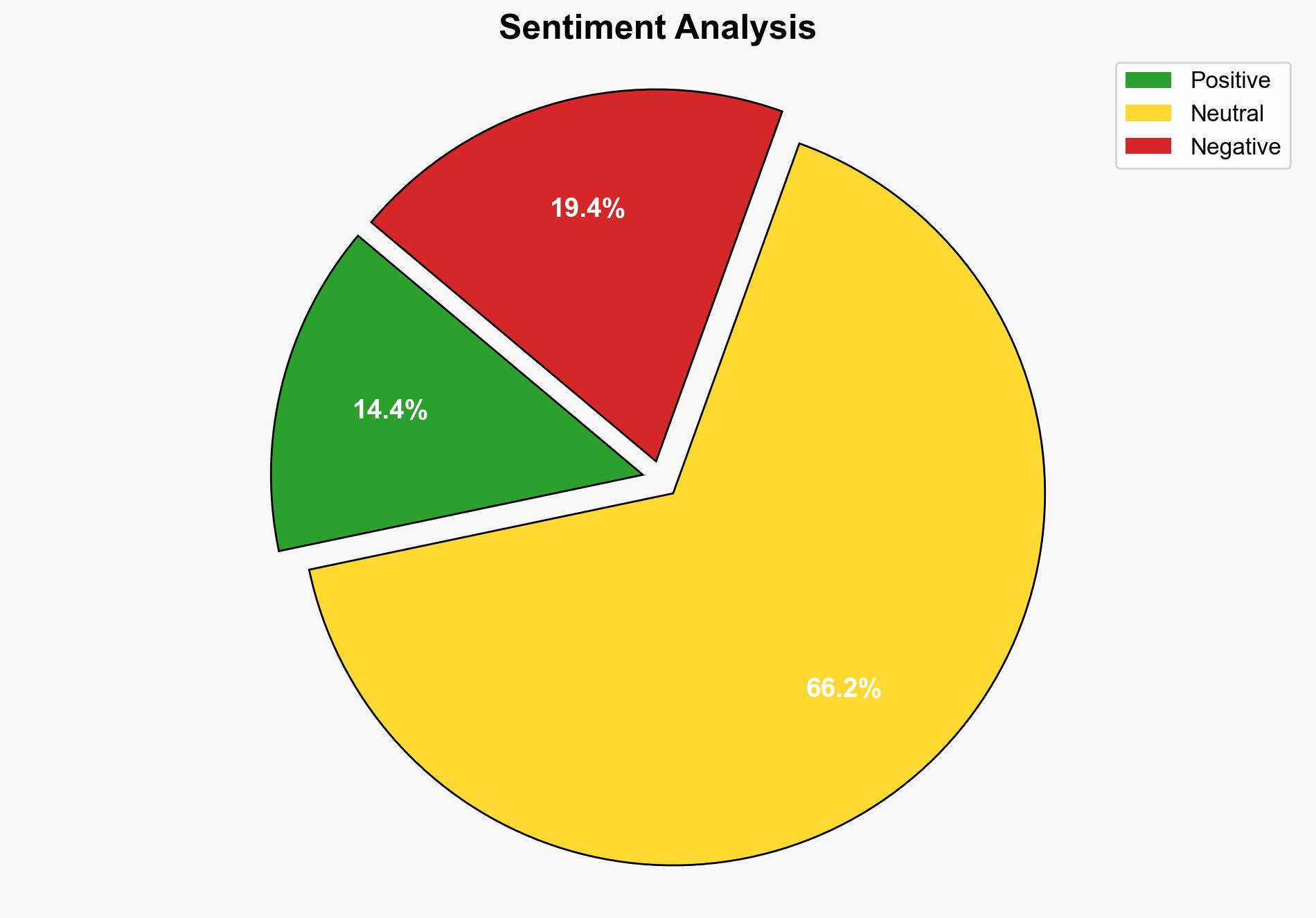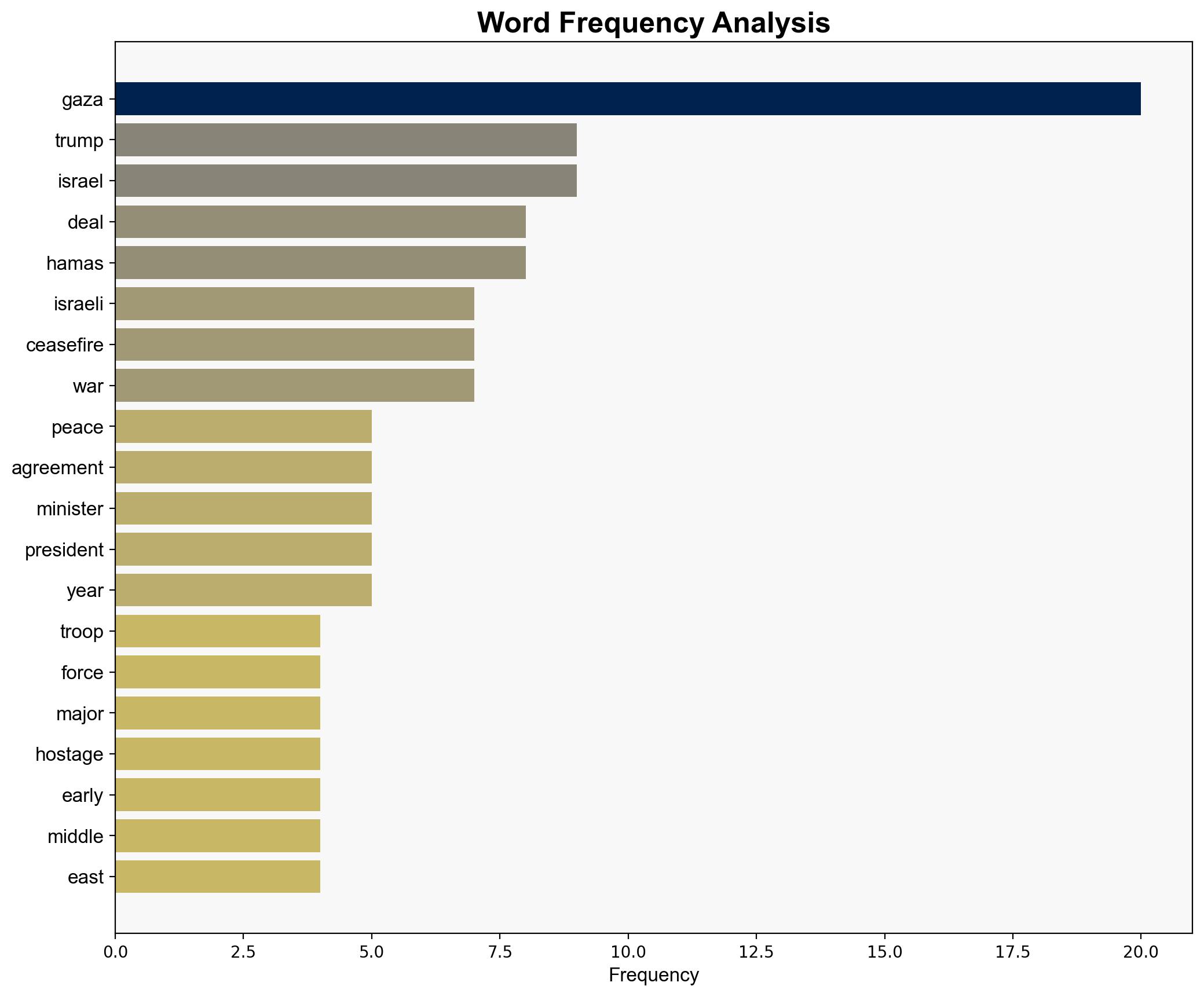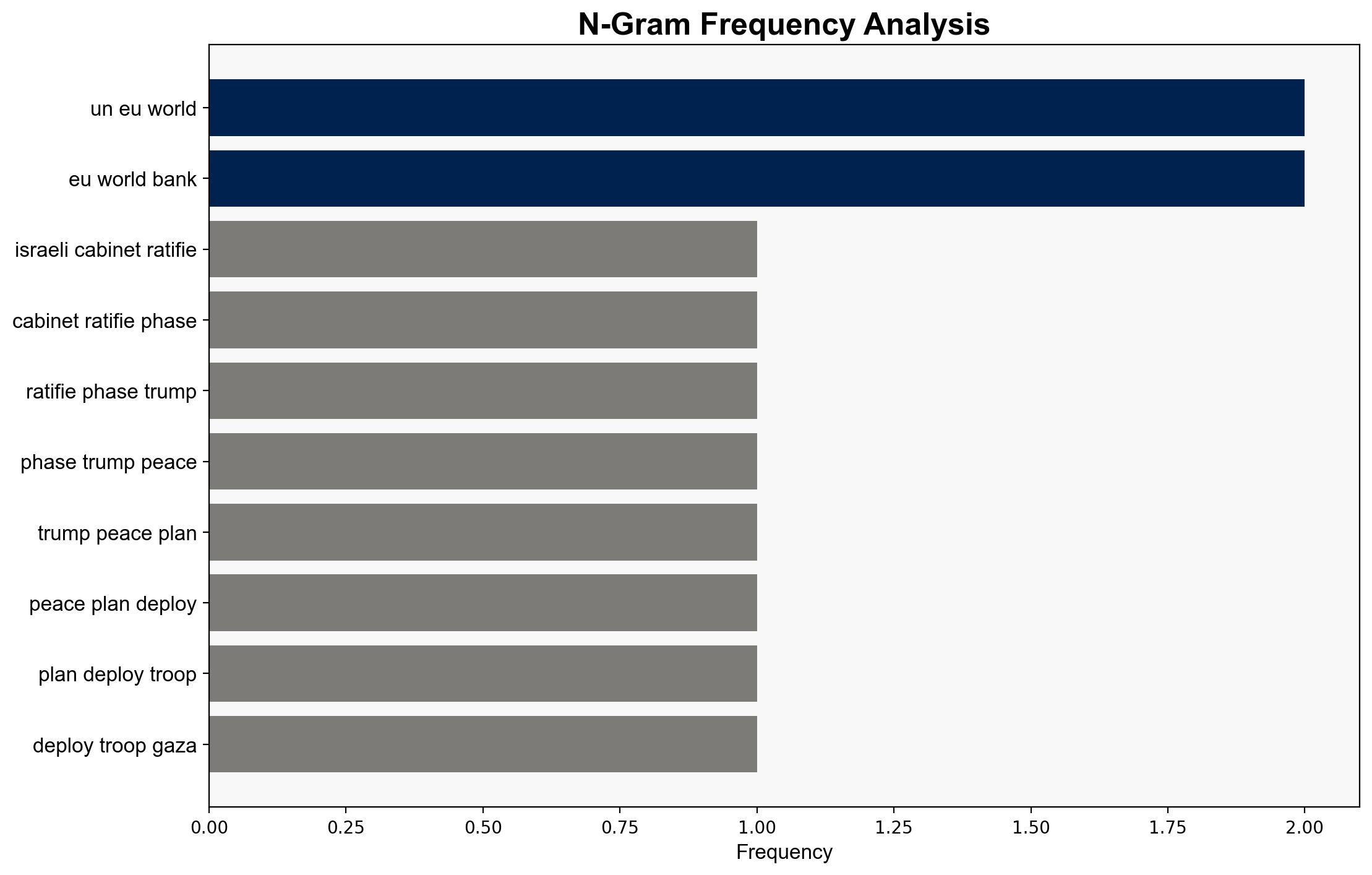Israeli cabinet ratifies first phase of Trump’s peace plan – as US to deploy 200 troops for Gaza task force – Sky.com
Published on: 2025-10-10
Intelligence Report: Israeli cabinet ratifies first phase of Trump’s peace plan – as US to deploy 200 troops for Gaza task force – Sky.com
1. BLUF (Bottom Line Up Front)
The strategic judgment is that the Israeli cabinet’s ratification of the first phase of Trump’s peace plan, coupled with the deployment of US troops, represents a significant but fragile step towards stabilizing the region. The most supported hypothesis is that this initiative aims to create a temporary ceasefire and facilitate negotiations, though the sustainability of peace is uncertain due to unresolved issues like Hamas disarmament. Confidence level: Moderate. Recommended action: Increase diplomatic engagement with regional stakeholders to address unresolved issues and ensure compliance with the ceasefire.
2. Competing Hypotheses
1. **Hypothesis A**: The peace plan and troop deployment are primarily aimed at achieving a long-term ceasefire and eventual disarmament of Hamas, leading to sustainable peace in the region.
2. **Hypothesis B**: The peace plan is a temporary measure to de-escalate immediate tensions, with little expectation of achieving long-term peace due to unresolved governance issues in Gaza and opposition within the Israeli government.
Using ACH 2.0, Hypothesis B is better supported due to the significant unresolved questions regarding Hamas disarmament and governance, as well as internal opposition within Israel.
3. Key Assumptions and Red Flags
– **Assumptions**: The peace plan assumes that Hamas will be willing to disarm and that regional stakeholders will cooperate. It also assumes that internal Israeli opposition will not derail the process.
– **Red Flags**: The lack of clarity on Hamas’s willingness to disarm and govern Gaza raises concerns. The opposition from far-right Israeli government members could undermine the plan’s implementation.
– **Blind Spots**: The potential for unintended consequences, such as increased radicalization or external interference, is not fully addressed.
4. Implications and Strategic Risks
– **Geopolitical Risks**: Failure to resolve key issues could lead to renewed conflict, impacting regional stability and international relations.
– **Economic Risks**: Prolonged instability could hinder economic recovery and reconstruction efforts in Gaza.
– **Psychological Risks**: Continued uncertainty may exacerbate tensions among local populations, affecting public sentiment and compliance with peace efforts.
5. Recommendations and Outlook
- Engage with regional powers, including Egypt and Qatar, to mediate and ensure adherence to the ceasefire.
- Develop contingency plans for potential escalation scenarios, including increased military readiness and humanitarian support.
- Scenario Projections:
- Best Case: Successful disarmament of Hamas and establishment of a stable governance structure in Gaza.
- Worst Case: Breakdown of the ceasefire leading to renewed conflict and regional instability.
- Most Likely: Temporary de-escalation with ongoing negotiations and unresolved governance issues.
6. Key Individuals and Entities
– Donald Trump
– Khalil al-Hayya
– Benjamin Netanyahu
– Steve Witkoff
– Jared Kushner
– Bezalel Smotrich
– Itamar Ben Gvir
7. Thematic Tags
national security threats, regional focus, peace negotiations, Middle East stability




